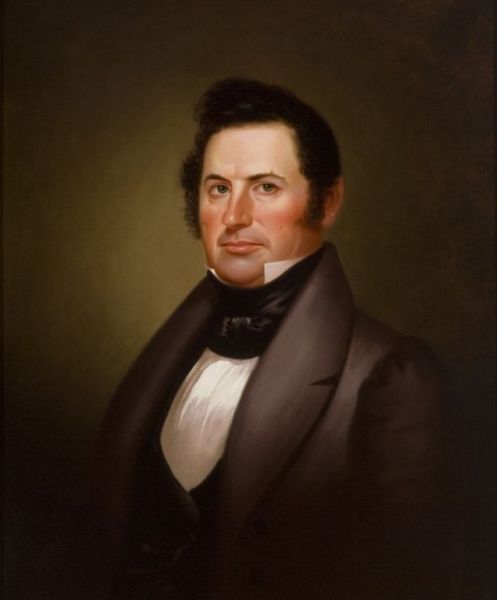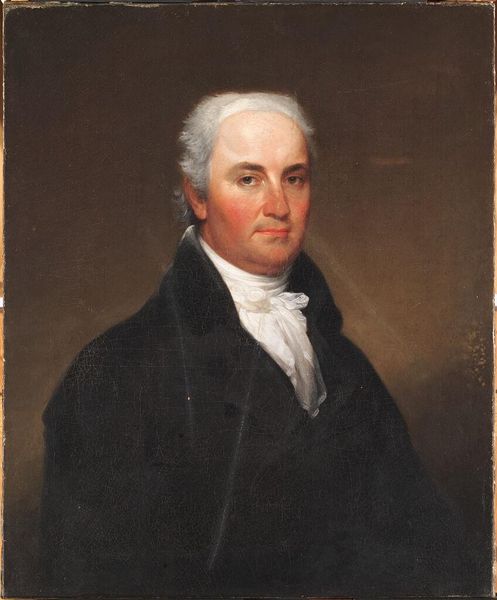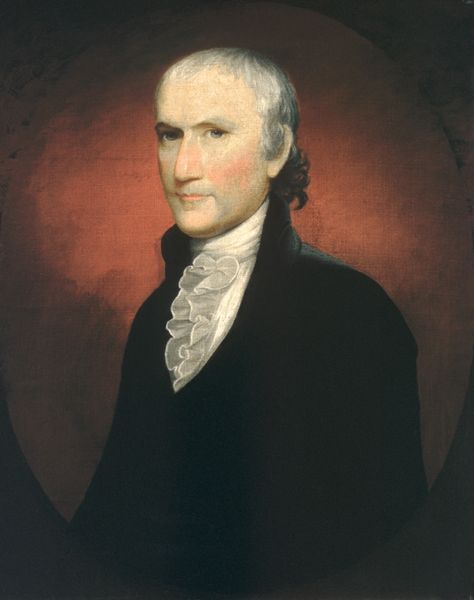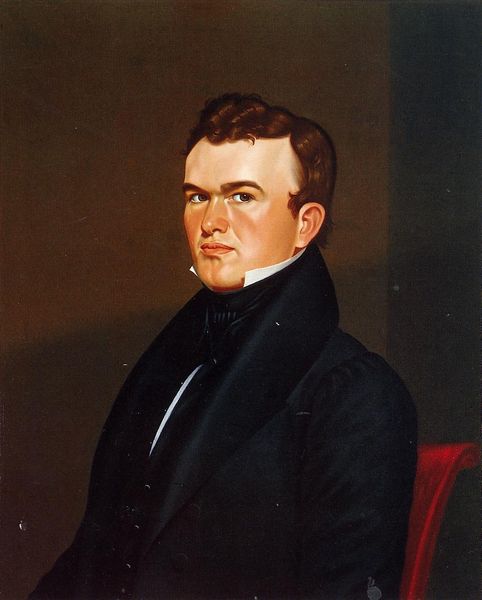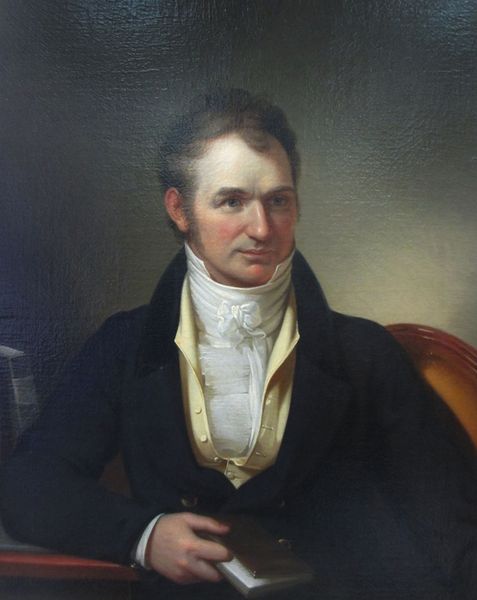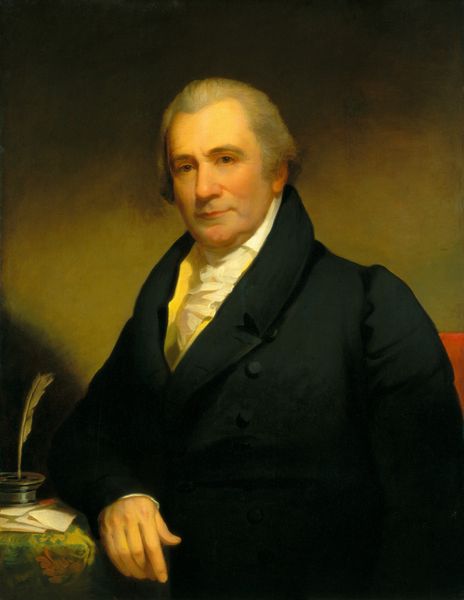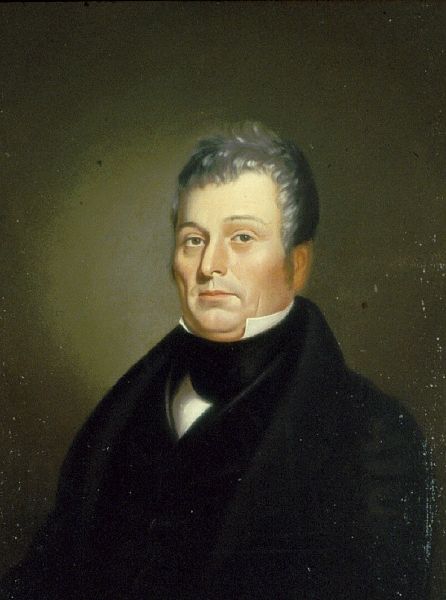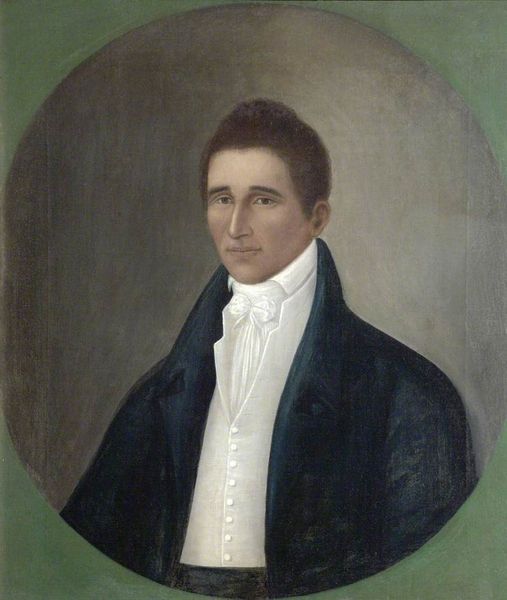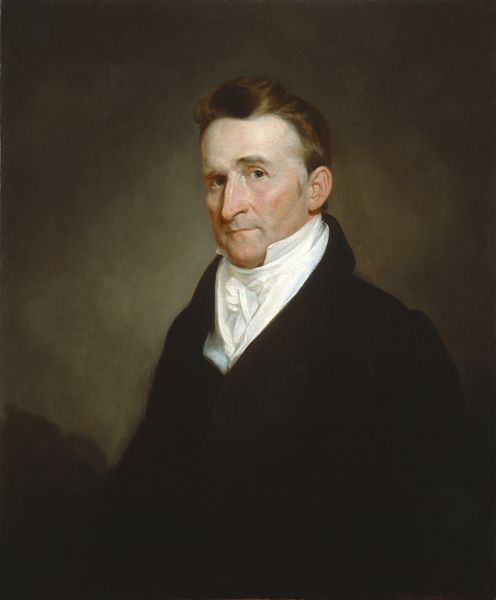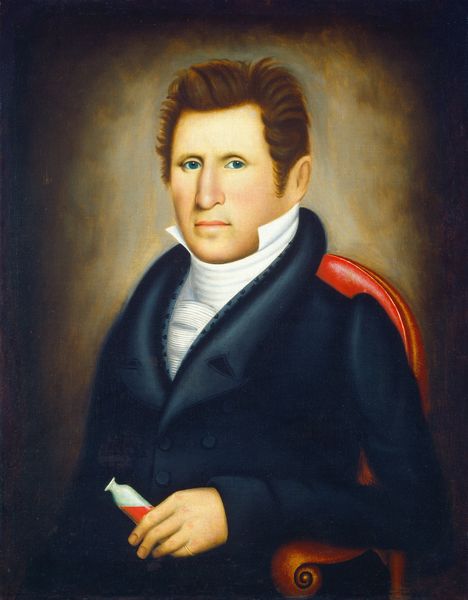
#
portrait
#
portrait reference
#
portrait head and shoulder
#
animal drawing portrait
#
portrait drawing
#
facial portrait
#
portrait art
#
fine art portrait
#
celebrity portrait
#
digital portrait
Copyright: Public domain
Curator: Staring back at us, we have George Caleb Bingham's rendering of Dr. John Sappington, dating to 1834. Editor: My immediate impression is of restrained power, perhaps even a melancholic dignity. There’s something profoundly still about him, like he’s absorbing a great weight. Curator: Bingham’s style here reflects a period deeply influenced by Enlightenment ideals, a focus on reason and observable detail but beyond pure physical realism. Dr. Sappington’s portrait subtly embodies the American drive towards self-improvement and societal leadership through knowledge. We see him at "Aged 59," as noted on the painting. Editor: "Self-improvement," hmm, even in portraits of white men, the American ethos screams loudly. He appears every inch the respectable figure: his sober clothing and the faintest hint of pink in his cheeks convey something about wealth and, obviously, power. And you feel, I think, a real connection to his aging self. There's an intimacy. I want to ask questions! Curator: Indeed, that palpable aging process becomes a focal point. The slightly softened lines around the eyes, that grey beginning to pepper his hair...Bingham captures something universal about confronting mortality while subtly nodding towards Sappington's accomplishments. It creates that connection. Sappington was famous for his "anti-fever pills." Editor: Aha! Connecting mortality to his practice! That brings up an interesting contradiction inherent within Western medicine. There is the ambition to fight death alongside acceptance of our bodies. His serious mien speaks directly to this. Also I find it ironic that this is a 'celebrity portrait', but not celebrity like we think of celebrities today. Curator: Precisely! Bingham doesn't embellish or flatter excessively; instead, he honors a life dedicated to community service through medicine. This is representation stripped down, it transcends simple image creation by delving into persona and essence through delicate artistry Editor: Well, it does cause me to reflect on how portraits immortalize some while others remain historically invisible and to what extend we should be challenging the dominance of colonial stories within artworks. I also can’t help but be curious about how Sappington might respond to his image being interpreted today. Curator: Always crucial perspectives to bring, ones that enrich art by bringing it into real space-time again.
Comments
No comments
Be the first to comment and join the conversation on the ultimate creative platform.
